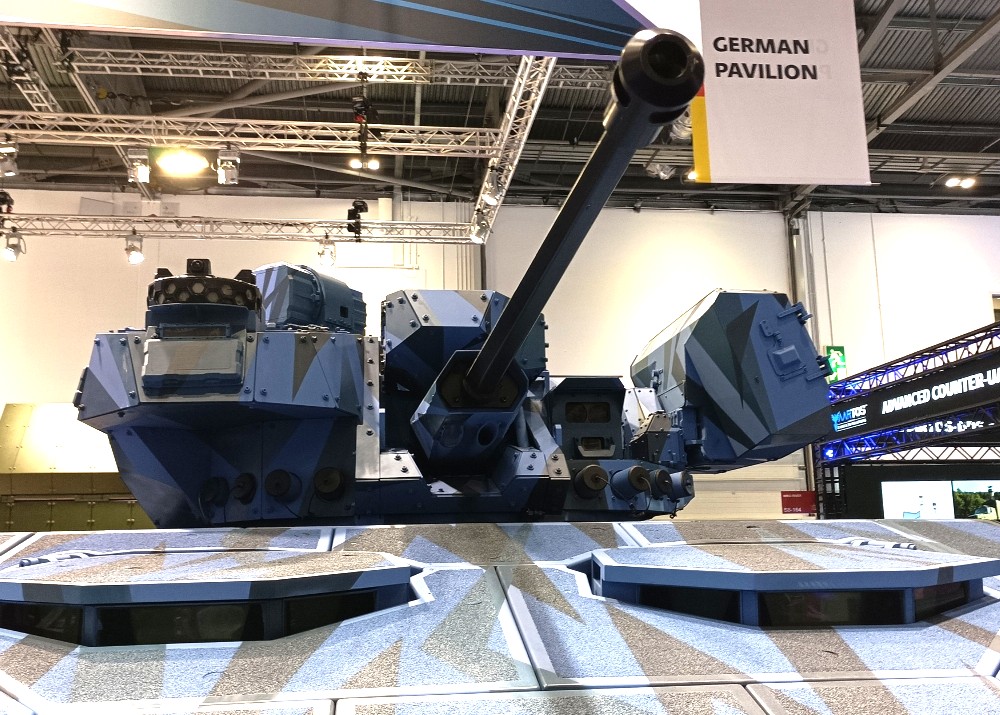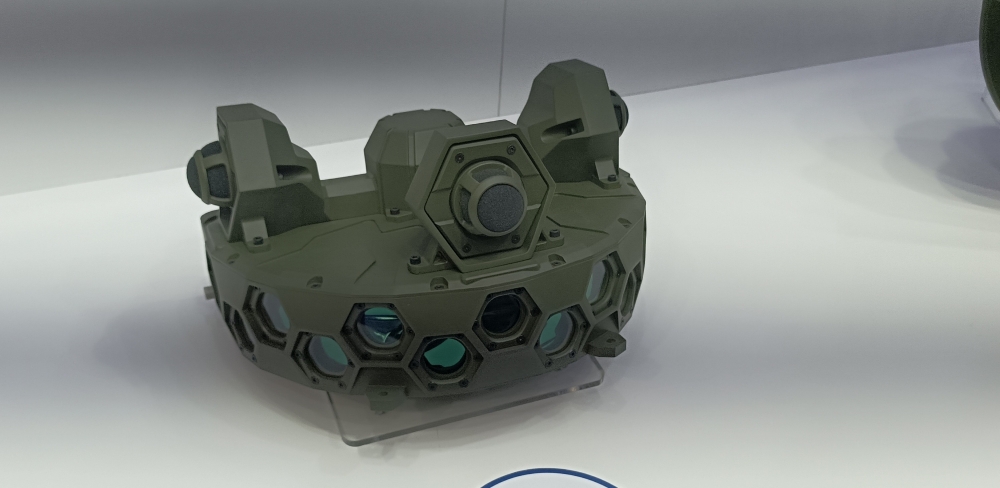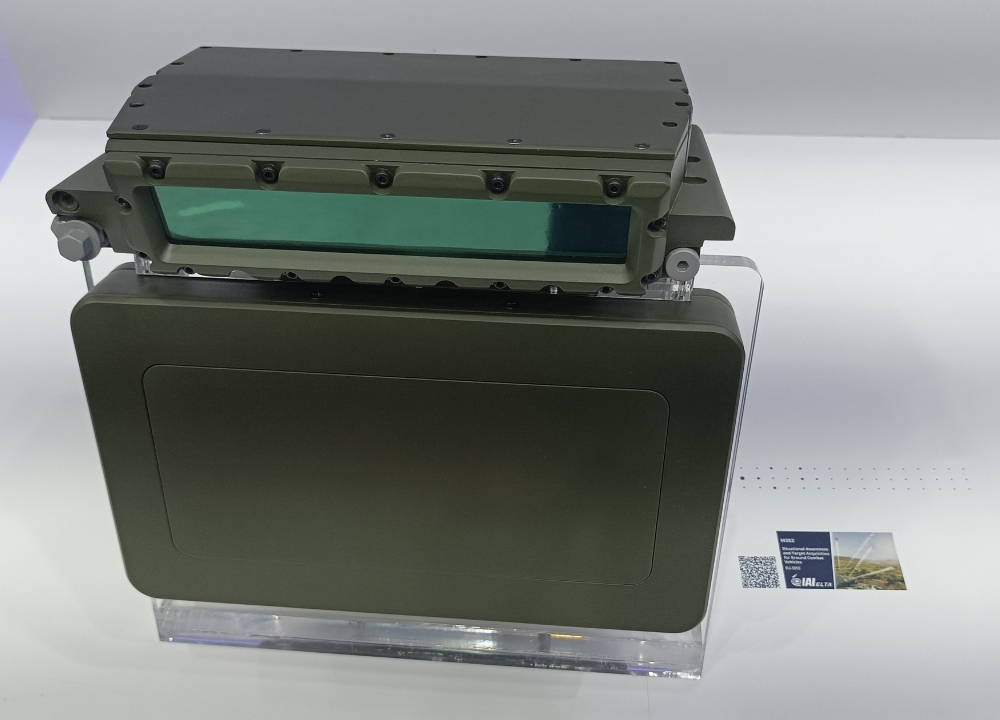
At DSEI, the Israeli IAI presented the latest evolution of the successful sensor assembly that enables the Rafael TROPHY Active Protection System. Named the M3S2, for “Multi-Mission; Multi Sensor Suite”, the ELI-3312 assembly combines radar, optical and even acoustic detection to deliver integrated surveillance. The new staring radar face of the M3S2 is much smaller than the previous one employed for TROPHY yet more powerful. Thanks to this, the new IAI radar is a true multirole sensor which detects and tracks drones in 90 degrees sector for each flat face. The radar is powerful enough to detect small, hovering quadcopters by their spinning rotor blades and also doubles as a ground-level surveillance sensor.
It is capable of detecting and tracking drones, personnel, and vehicle movements simultaneously in a broad field of view and can pin-point the source of enemy fire thanks to acoustic and muzzle flash detection.
Its primary use is situational awareness and active defence of armoured vehicles but it is so flexible it is also offered as a sensor option for Remote Weapon Stations.
The UK has selected the M3S2 as a key component of its Modular Integrated Protection System, the platform-agnostic, multi-system and multi-supplier "national" solution that the MoD has been assembling over the last few years with Leonardo UK as leading integrator. In the UK system, which could be seen fitted on the AJAX BLACKJAX at the General Dynamics stand, the M3S2 is integrated by laser warners and by Elbit IRON FIST interceptors.

IAI also showcased its THUNDERBULLET ELO-5220P, an integrated, passive, Infrared & Acoustic threat locator. Using Short Wave IR Electro-Optics and acoustics, the system accurately detects the source of enemy fire, from small arms upwards, in a 180° arc.
The system could be seen installed on the turret of the CONDOR, the novel air-defence vehicle showcased at DSEI by the German company FFG (pictured).
The integration of two very different detection methods lowers false alarm rates, makes the system far more sensible to a wider range of threats, and gives it the ability to better cope with different, challenging environmental conditions that can degrade either of the two sources, either the optical or the acoustic.
Follow us on Telegram, Facebook and X.









.png)
